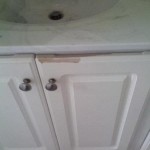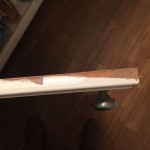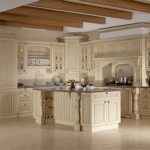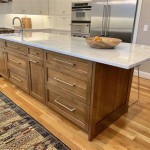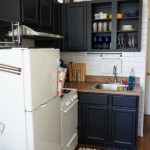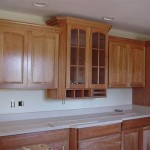Wet Sanding Kitchen Cabinets: A Comprehensive Guide
Wet sanding is a crucial step in achieving a smooth, professional finish when refinishing kitchen cabinets. It involves using progressively finer grits of sandpaper lubricated with water to remove imperfections and create a surface ready for painting or staining. This article will delve into the process, benefits, and necessary precautions for wet sanding kitchen cabinets effectively.
Choosing the Right Sandpaper
Sandpaper grit is categorized by numbers, with lower numbers indicating coarser grits and higher numbers indicating finer grits. The appropriate grit sequence depends on the initial condition of the cabinet surfaces and the desired final finish. For cabinets with significant imperfections, starting with a coarser grit, such as 180 or 220, may be necessary. However, for cabinets in relatively good condition, beginning with a finer grit, such as 320, is often sufficient. The sanding process should progress through progressively finer grits, such as 400 and 600, to achieve a smooth, glass-like finish. Using excessively coarse grits can create deep scratches that are difficult to remove, while skipping grits can result in an uneven surface.
The Wet Sanding Process
Wet sanding involves lubricating the sandpaper with water to minimize friction and prevent clogging. This lubrication also helps to create a finer scratch pattern, resulting in a smoother finish. Before beginning, the cabinets should be thoroughly cleaned to remove any grease, dirt, or dust. A sanding block or sponge should be used to ensure even pressure and prevent uneven sanding. The sandpaper should be dipped in water frequently to keep it lubricated, and the cabinet surface should be wiped clean with a damp cloth between grit changes to remove sanding residue. Sanding should be done in the direction of the wood grain to avoid creating cross-grain scratches. For raised panel cabinets, extra care should be taken to avoid sanding through the thin veneer on the edges of the panels. Patience and attention to detail are essential for achieving optimal results.
Benefits of Wet Sanding
Wet sanding offers several advantages over dry sanding. The water acts as a lubricant, reducing friction and preventing the sandpaper from clogging with dust. This results in a cleaner sanding process and extends the life of the sandpaper. The lubrication also helps to create a finer scratch pattern, leading to a smoother, more professional-looking finish. Wet sanding also helps to prevent dust from becoming airborne, which can be a health concern, especially when working indoors. The dampened sanding residue is easier to clean up compared to the fine dust produced by dry sanding.
Necessary Precautions
While wet sanding is generally safe, certain precautions should be taken to avoid potential problems. Excessive moisture can damage wood, particularly if it's not properly sealed. It is crucial to avoid soaking the wood and to dry the surface thoroughly after sanding. Electrical safety should also be considered, especially when working near water. Ensure that all electrical outlets are covered and that hands are dry before handling electrical equipment. Proper ventilation is important to prevent the buildup of moisture and to allow the cabinets to dry completely after sanding.
Materials and Equipment
The necessary materials and equipment for wet sanding kitchen cabinets include various grits of sandpaper (e.g., 180, 220, 320, 400, 600), a sanding block or sponge, a bucket of clean water, clean cloths or sponges for wiping, and personal protective equipment such as gloves and eye protection. A spray bottle can be helpful for applying water to the sandpaper and surface. High-quality sandpaper designed specifically for wet sanding is recommended for optimal results.
Preparing the Cabinets
Proper preparation is essential for successful wet sanding. Before beginning, the cabinets should be thoroughly cleaned and degreased. Any existing finish, such as paint or varnish, may need to be stripped or lightly sanded to create a suitable surface for the new finish. Hardware, such as hinges and knobs, should be removed to avoid damage and ensure a smooth, even surface for sanding. Filling any dents or imperfections with wood filler before sanding can further improve the final result. Allow the filler to dry completely and sand it smooth before proceeding with the wet sanding process. Masking off areas that don't require sanding can protect them from accidental scratches.
Achieving a Professional Finish
Achieving a professional-looking finish requires patience and attention to detail. Consistent pressure and overlapping strokes are important to ensure an even surface. Frequent inspection of the surface under good lighting can help identify any remaining imperfections. After sanding, the cabinets should be thoroughly cleaned and allowed to dry completely before applying the new finish. A tack cloth can be used to remove any remaining dust before painting or staining. Following these steps will help ensure a smooth, professional-looking finish that enhances the beauty and value of your kitchen cabinets.
Refinishing Kitchen Cabinets A Beautiful Mess

How To Wet Sand Furniture
Refinishing Kitchen Cabinets A Beautiful Mess
Refinishing Kitchen Cabinets A Beautiful Mess

How To Paint Kitchen Cabinets A Step By Guide Confessions Of Serial Do It Yourselfer

Staining Your Wood Cabinets Darker Young House Love

What You Need To Know Before Painting Cabinets The Palette Muse
Refinishing Kitchen Cabinets A Beautiful Mess

Putty Colored Cabinets And Cabinet Painting Tips The Lilypad Cottage

How To Paint Kitchen Cabinets Like The Pros
Related Posts

